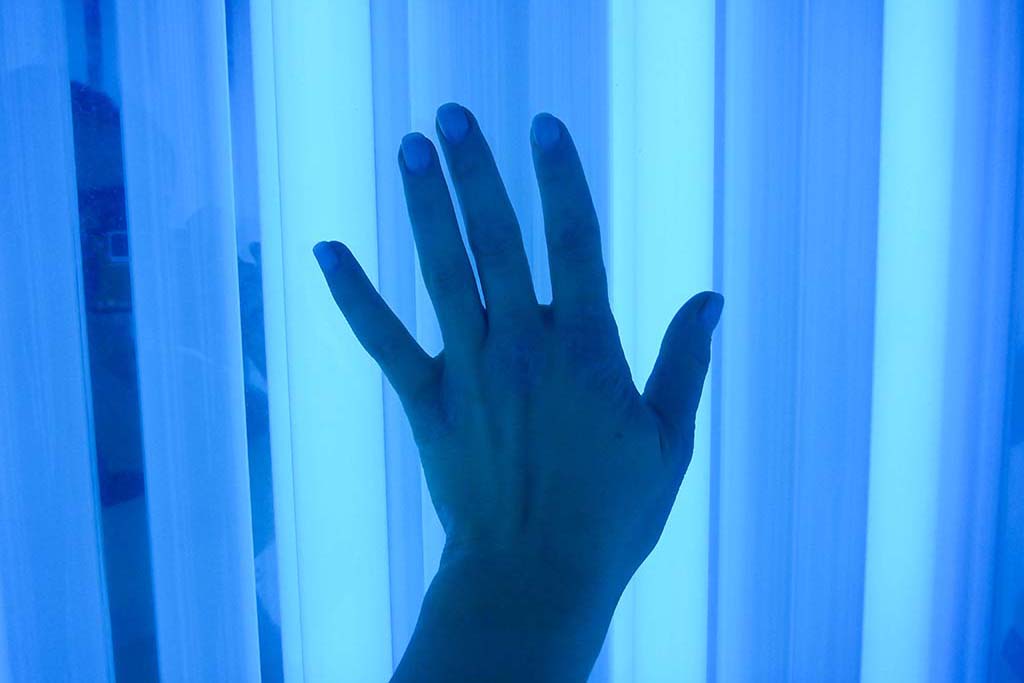What Is Narrowband UVB Phototherapy?

Narrowband UVB phototherapy is a proven, effective, and safe treatment option for chronic skin conditions such as psoriasis, vitiligo, and eczema. Unlike broad-spectrum ultraviolet treatments or medications that impact the immune system more broadly, narrowband UVB uses a precise wavelength of light to reduce inflammation and restore skin health.
Let’s explore what makes this form of therapy so effective—and why more dermatologists are recommending it for patients seeking lasting, medication-free relief.
How It Works
Narrowband UVB phototherapy uses ultraviolet B light at a specific wavelength—311 to 313 nanometers—which has been shown to be the most effective part of the UV spectrum for treating inflammatory skin diseases while minimizing the risk of burning or long-term skin damage.
This wavelength helps:
- Slow down rapid skin cell growth (which causes scaling and plaques)
- Reduce inflammation and itch
- Stimulate pigment production in conditions like vitiligo
Treatment typically involves 2–3 short sessions per week under medical supervision or with a prescribed home phototherapy device. Visible improvements can often be seen after 15–20 sessions, with maximum results usually achieved by 30–40 treatments.
What Conditions Is It Used to Treat?
Narrowband UVB is FDA-cleared and clinically validated for the treatment of several chronic skin conditions, including:
- Psoriasis
- Vitiligo
- Atopic dermatitis (eczema)
- Lichen planus
- Cutaneous T-cell lymphoma (CTCL)
- Pruritus (chronic itching)
- Other inflammatory dermatoses
Why Narrowband?
Narrowband UVB is often preferred over broadband UVB or other systemic treatments for several reasons:
Focused & Safer Wavelength
By isolating the most therapeutic part of the UVB spectrum, narrowband treatment reduces the likelihood of burning and long-term UV damage.
Non-Systemic Option
It’s a topical-like approach that doesn’t affect the whole body, making it especially suitable for pregnant patients, children, or those concerned about immunosuppressants or biologics.
High Patient Satisfaction
Patients appreciate the minimal side effects, reduced need for topical steroids, and the option to treat at home or in clinic, depending on lifestyle and disease severity.
In-Clinic or At-Home Use
With today’s technology, narrowband UVB therapy isn’t limited to dermatology offices. Home phototherapy devices, like those available through Phothera, allow patients to receive the same high-quality treatment in the comfort of their own home—with protocols and dosing controlled by their healthcare provider.
Clinical Considerations
To maximize treatment outcomes, providers should:
- Determine a patient’s Fitzpatrick skin type
- Consider Minimal Erythemal Dose (MED) testing
- Monitor response and tolerance over time
- Educate patients on photoprotection and treatment compliance
Phothera offers provider tools and training to support evidence-based dosing and device safety for both in-office and home phototherapy regimens.
A Trusted Treatment Backed by Research
Narrowband UVB phototherapy has been studied for decades, with consistent evidence supporting its efficacy and safety—even in pediatric and long-term use cases.
As more patients look for drug-free, sustainable relief, narrowband UVB offers a compelling option that addresses skin disease at its source—gently and effectively.
Explore Phototherapy Solutions
Interested in offering narrowband UVB phototherapy in your practice or prescribing a home device for your patients?
